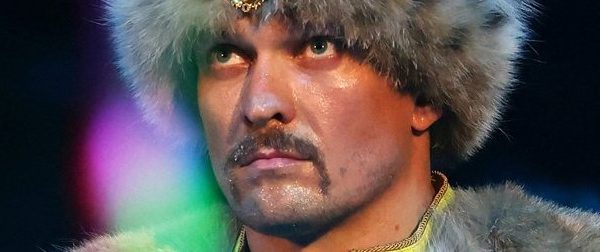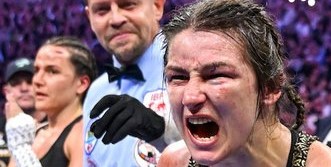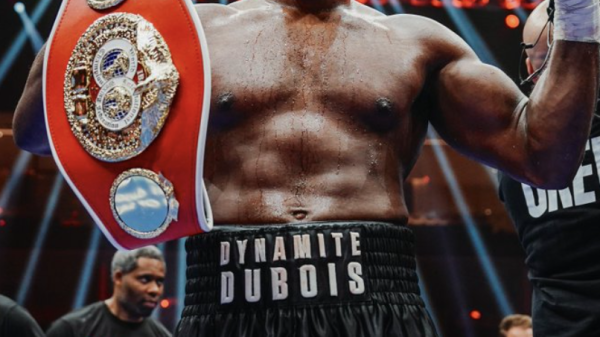By Tyson Bruce
Floyd Mayweather, for better or worse, remains comfortably atop the pound for pound rankings. Where Mayweather stands among the all time greats, however, is a subject of fierce debate within the sport. Critics of Mayweather will point out his careful selection of opponents, frequent periods of inactivity, and his reluctance to fight the preeminent rival of his time in Manny Pacquaio. Supporters of Mayweather will highlight his dominance in a variety of different weight classes, statistical dominance, and mindboggling longevity.

In the wake of destruction and chaos left by the wretched sanctioning bodies and alphabet titles the “pound for pound” title—once just an abstract conversation starter—is now the most coveted prize in boxing. That is because the proliferation of title belts and weight classes have made it virtually impossible to distinguish whom the real champions are. This has drastically reduced the importance of being a great champion within a certain weight class. The ‘pound for pound’ title is the last distinction of merit that the corrupt swine’s have yet to find a way to get their hands on. As a result the “pound for pound” number one has become the most tangible “championship” for the average boxing fan.
Most credible ‘pound for pound’ lists are a meritocracy rather than an indication of who may actually be the most physically unbeatable fighter in the world. In the current top ten you have Mayweather (37), Marquez (40), Pacquiao (35), and Martinez (39). Among those names only Mayweather still truly feels like a dominating force. At age thirty-seven that is a remarkable achievement and one that puts Mayweather in a select company of boxers.
The ability of an athlete to dominate for a long period of time is one of the most important criteria when deciding their legacy upon retiring. It’s the reason why athletes like Bernard Hopkins and Tim Duncan are held in such a universally high regard. Mayweather, perhaps because of his sheer dominance or youthful exuberance (a polite euphemism), just isn’t thought of as being an old fighter. But if history has taught us anything its that boxers do not get better in their thirties. Usually around the age of thirty-two you start to see a gradual if not pronounced decline in ring dominance. So, it is interesting to compare how Mayweather has done in his thirties to other fighters of the modern era that we think of as “all time greats”.
In 2007, after defeating Oscar De La Hoya (W-12) and Ricky “Hitman” Hatton (KO-10) Mayweather briefly retired at the age of thirty. He returned to the ring in 2009 at the age of thirty-two to defeat the lightweight champion Juan Manuel Marquez. Although Mayweather is given virtually no credit for this victory it is considered by many to be a career-defining win for Timothy Bradley—even though Bradley was a younger and naturally bigger man than Mayweather at the time of victory. Mayweather has also defeated an aging Shane Mosley, Victor Ortiz, Miguel Cotto, Robert Guerrero, and Saul Alvarez. Although they weren’t always the fights we wanted (Pacquiao) there could be no debate that this is still world-class opposition. All told between the age of 32-37 and with long periods of inactivity Mayweather has gone 6-0-0-(1).
When comparing Mayweather to other great champions of the past the name Sugar Ray Leonard is frequently mentioned. Although they share some stylistic similarities (hand speed, quick feet, ridiculous reflexes) Leonard is considered to be in many ways the polar opposite of Mayweather. Leonard was lucky to come up in an era with many other great fighters in his weight class and brave enough to have challenged them all. This made him the undisputed darling of boxing in the 1980’s. Conversely, Mayweather is regarded as a villainous figure whose accomplishments are challenged and disputed at all turns. However, Leonard’s reign as a top fighter was much shorter than Mayweather’s. Leonard came out of retirement to defeat Marvin Hagler at age 30 and went just 2-2-1 from that point forward.
Julio Caesar Chavez was regarded as the best ‘pound for pound’ fighter in the world for the vast majority of his prime. Chavez was 89-0-1 before suffering his first defeat. These are old-time numbers in the modern era and something that very few fighters are still capable of doing. Chavez was thirty-one years of age when he suffered his first defeat on a close but unquestionable decision loss to heavy betting underdog Frankie Randall. Although Chavez won many other fights after this point his time as one of the best fighters in the world was over and he suffered five of his six career defeats after the age of thirty-two.
The fighter that stylistically bears the most similarity to Mayweather is probably Pernell “Sweat Pea” Whitaker—who like Mayweather was a smaller man that dominated bigger fighters with defense and intelligence. Whitaker was poetry in motion during his prime and seldom lost a round let alone a fight. Whitaker is considered one of the greatest lightweights of all time and one of the twenty greatest fighters to have ever laced-up a pair of boxing gloves. Whitaker’s talent slowly eroded in his thirties because of his wavering focus and gradual dependence on cocaine. After losing a controversial decision to Oscar De La Hoya in 1997 at age thirty-three Whitaker went a dismal 0-3 with one no-contest in his last four fights. It’s a damn shame to because with his superfluous defensive skills he probably could have competed at the top level for many more years to come.
The only fighter whose longevity far outweighs that of Mayweather’s is his contemporary Bernard Hopkins. Since the age of thirty-two Hopkins has gone a remarkable 24-4-1, which is as many fights as some people have in their entire career. Remarkably, Hopkins’ career defining victory against Felix Trinidad in 2001 didn’t occur until he was already thirty-five years of age. In fact Hopkins was undefeated from 1993 until all the way until 2005 when he dropped a disputed split-decision to Jermaine Taylor after making twenty successful middleweight title defenses. Unlike the other fighters mentioned on this list Hopkins never began to really slip until he was in his forties, with four of six career losses coming after that point. Yet tragically, during his years as middleweight champion between 1995-2001, when he was probably truly at his best, he was relatively unknown, underappreciated, and unwatched. Mayweather has a long way to go if he wants to challenge Hopkins’s longevity and would probably be better off not even trying.
When discussing the best “pound for pound” fighter of the last generation the debate comes down to Mayweather and Hopkins. Clearly, Mayweather has reached a level of greatness with no blemishes on his record while Hopkins has defied father time but has had a few slip ups along the way. These two greats share many commonalities, in that they both are defensive masters who take their physical conditioning very serious. Neither man smokes, drinks nor has ever had any substance abuse issues. They treat their bodies like temples and it shows in the ring. When was the last time either man looked tired in the ring?
The interesting question is what if Mayweather does not retire in the next year and decides to follow Hopkins into a “second career”. Looking ahead, besides Pacquiao and Bradley, there are very few threats to Mayweather who has easily defeated all recent challengers and has not really shown any signs of slowing down. He has perfected his training style in the last few years and looks very comfortable fighting a couple times a year while balancing his other interests. If Mayweather was to fight another four years and defeat eight or ten more contenders then he could truly be counted amongst the very greatest “pound for pound” of all time.
Floyd Mayweather will never win a humanitarian award and his responsibility for the Pacquiao fight not happening will deservedly stain his legacy forever. However, even without the Pacquiao fight Mayweather’s ability and career achievements are astounding. Very few boxers, as witnessed above, have the drive and ability to stay hungry and determined year after year the way Mayweather does. At age thirty-seven he has hardly lost a round in years, never been cut or busted up, and doesn’t even know what a loss might look like. His greatest strength and his greatest weakness is his incredible hubris—something that has allowed him to stay dominant for so long—yet somehow left the boxing world feeling like he could have done more.







